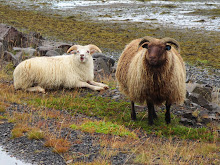Oaxaca part two
Oaxaca province has the largest population of indigenous people's in Mexico and many retain their diverse languages and traditions. The majority of the land is still owned collectively by the people's though this is under grave threat.
Yesterday went on a ethnobotanical tour led by an Oaxaca biologist and anthropologist who designed the cacti and food garden at the cultural museum. Great stuff. The focus was on human codevelopement with plants.
For example the people of Oaxaca over thousands of years bred the tall organ cactus to be thorn less so it was less danger to us. They planted these enormous stalk plants around the prickly pear and cochonil cactus which was also bred to be thornless, so that animals would not eat them.
In turn the people got delicious and nutritional prickly pear without losing fingers or eyes to nasty barbs or spikes. They also got a thornless cactus with a parasite problem. However as it is said crisis can mean opportunity.
The insects produce a waxy white cocoon which, when crushed, makes the most beautiful and vivid red. This was harvested by the people for cloth dye, cosmetics and paint pigment. For some time the price was higher than that of silver.
Chemical analysis has shown that paintings from El Greco to Rembrandt all utilized the famous Conchila, dye.
This saved communal land ownership in Oaxaca as plantation slave operations to produce the dye were totally unprofitable. The best way to get the stuff was to just let the ,indios, do as they always did and demand Conchila as taxes and tribute.
Way to go little parasitic insect.
NOTE as I wrote the other day I am trying to spell Mexican and indigenous words properly however this tablet will not turnoff the worst auto correct I javelin ever dealt with thus pot luck but I do know how to spell


0 Comments:
Post a Comment
<< Home